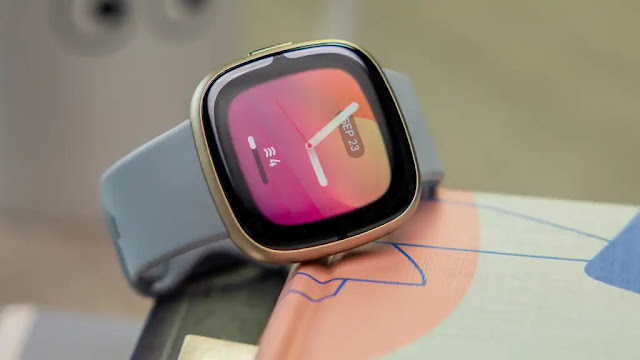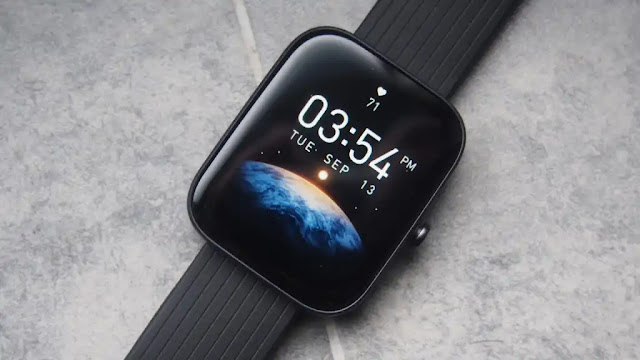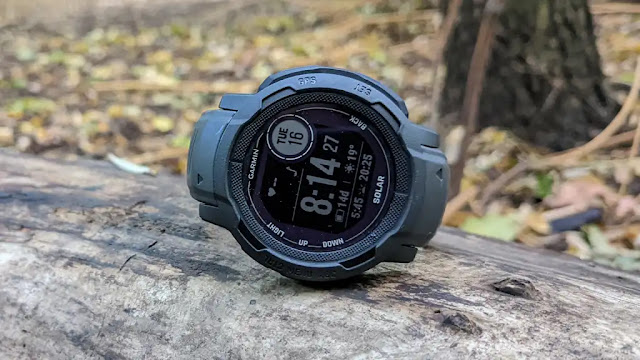The Samsung Galaxy Watch 3 could be a true Apple Watch Series 5 competitor.
Should I Buy The Samsung Galaxy Watch 3?
Pros
- Rotating bezel
- Two-day battery life
- Advanced fitness tracking
Cons
- Expensive
- Lack of third-party apps
- Same processor as first-gen Watch
Our Verdict
- It may not have the same app availability as Wear OS watches, but the Samsung Galaxy Watch 3 is one of the best you can buy right now.
Price When Reviewed
- $399 (41mm) | $449 (45mm)
Two years after the launch of the original Samsung Galaxy Watch, we have the Samsung Galaxy Watch 3. No, you didn’t skip a year, Samsung really did decide to skip 2 and avoid confusion with the Galaxy Watch Active 2, released last year. Branding aside, the Galaxy Watch 3 is one to pay attention to; the design is more refined, with a thinner, lighter body and larger displays without an increase to overall dimensions, and it’s much more capable in the fitness tracking department than many competitors too.
It’s also much more expensive than the original, bringing it in-line with the king of smartwatches, the Apple Watch Series 5. Has Samsung done enough to justify such a steep price rise? After using the Galaxy Watch 3 for some time, I genuinely think so.
Design And Build
The Samsung Galaxy Watch 3 may not look that different from its predecessor from 2018, but that’s certainly not a bad thing. The tech giant has knocked it out of the park with a stunning circular smartwatch that balances form and function perfectly, sporting a slimmer, lighter and more comfortable design than that of the first-gen Galaxy Watch that fans will appreciate.
As with most smartwatches on the market, the Galaxy Watch 3 is available in two configurations - 41mm and 45mm - depending on your size preference. I’ve been using the 41mm Galaxy Watch 3, for reference, but most of the core features are identical, bar one of two specs.
One of the key differences is, unsurprisingly, the size of the display. You’ve got the choice between a smaller a 1.2in (41mm) or larger 1.3in (45mm) Circular Super AMOLED panel, both of which offer a full-colour always-on display experience. The display has a resolution of 360 x 360 regardless of display size, meaning the 41mm variant has a slightly higher pixel-per-inch count, but it’s not something you’ll likely notice in everyday use.
I feel that the 1.2in screen is a little on the small side for me, but I assume that’s more down to the fact I use a 46mm Apple Watch as my daily driver. That said, I had no problem reading any on-screen text or using any app, even in direct sunlight when out on runs, with a dazzlingly bright display.
That bright, detailed display is protected by Corning’s Gorilla Glass DX, which should protect your watch from scratches and marks, but interestingly, it’s a slight downgrade compared to the DX+ available on the original Galaxy Watch. It’s not a dealbreaker by any means, but interesting to note considering the significant increase in price compared to the original.
Display aside, the rotating bezel and physical buttons that made the original so popular have made a return, although the former is slimmer this time around to reduce overall bulk. In fact, the Galaxy Watch 3 is overall 14% thinner than its predecessor, measuring in at 11.1mm thick.
The rotating bezel provides a satisfying tactile click as you scroll, giving you fine control when scrolling through apps on the smartwatch or browsing your recent notifications. In fact, I find myself mindlessly scrolling the bezel through the day because it’s such a satisfying experience. It’s my preferred way to interact with the Galaxy Watch 3, especially considering my finger takes up most of the small display of the 41mm variant, and will hands-down be the thing I miss most when I switch back to my Apple Watch.
The Galaxy Watch 3 is crafted from premium materials, with both variants sporting a stainless steel finish by default, although the colour options vary depending on the size you opt for. The 41mm variant is available in Mystic Silver or Mystic Bronze, while the 45mm model is available in Mystic Black or Mystic Silver. The use of stainless steel also means the smartwatch is lightweight, weighing in at 48.2g and 53.8g respectively, and there’s also an even lighter 45mm titanium model on the cards, but pricing and availability are yet to be confirmed.
Performance And Software
Okay, let’s first address the elephant in the room: the Galaxy Watch 3 sports the same chipset as 2018’s Galaxy Watch, sporting the Exynos 9110 alongside 1GB of RAM. That might sound disappointing to those that want the best spec possible, but it certainly doesn’t impact performance in any noticeable way. Besides, most Qualcomm-based smartwatches on the market right now are based on the Snapdragon Wear 3100, also released in 2018.
When it comes to the Galaxy Watch 3, apps load quickly, there’s not a hint of stutter when scrolling through Tizen’s circular app menus and, when the always-on display is disabled, the smartwatch instantly wakes when tilted towards you. You could argue that processing power isn’t nearly as crucial on a smartwatch than on a smartphone, as long as the experience is smooth, and that’s certainly the case with the Galaxy Watch 3.
There’s 8GB of storage available, but that includes the OS at just shy of 4GB, leaving you with 4GB to store your favourite apps and workout tunes, allowing you to leave your phone at home when exercising.
When it comes to software, you won’t find Google’s Wear OS - instead, the Galaxy Watch 3 sports Samsung’s own Tizen OS 5.5, compatible with both iOS and Android. For those unaware, Tizen OS is a beautifully designed system with high-quality animations, extended functionality and even the ability to run standalone apps, offering a premium smartwatch experience.
But, without Google Play, there’s a lack of apps compared to Wear OS and watchOS smartwatches. Samsung has included alternatives to unavailable apps in the Galaxy Store, and there are a few apps you’ll recognise, but you won’t find apps like Google Maps and Citymapper on the Galaxy Watch 3.
Samsung also prides itself on the variety of watch faces available, boasting over 8000 at launch, thanks to a dedicated Watch Face section in the Galaxy Store. Packed with third-party alternatives, you can customise the look of the watch depending on what you’re doing. You could have a sporty watchface with stats like your current steps, heart rate and shortcuts to fitness tracking when exercising, and a classic analogue watchface when dressed up for a night out. Many are highly customisable too, with a variety of complications, layouts and colours to choose from.
It’s all about variety with the Galaxy Watch 3 watch faces, that much is clear.
With a smaller 247mAh cell than the original, many were concerned about the battery life of the smaller 41mm variant. Admittedly, it doesn’t offer the same four-to-five day battery life of the larger 45mm option, but it’ll still comfortably get you through two days without a top-up. That does depend somewhat on usage though, as those using the Galaxy Watch 3 to track exercise will find the battery dies much quicker.
It does take a while to charge up, at around two and a half hours from flat-to-full in my experience, and that’s not ideal if you need a quick top-up before bed. The good news is that it’s Qi-enabled, allowing you to charge it via any wireless charger (or even reverse charging smartphones) that you come across throughout the day.
Fitness Tracking
Despite the elegant design - and the fact there’s no silicone strap in the box - there’s a significant focus on fitness when it comes to the Galaxy Watch 3.
The highlight is the automatic tracking of seven activities: running, walking, swimming, cycling, rowing, elliptical workouts and dynamic workouts (essentially aerobics or anything with significant movements). While some smartwatches are a bit hit-and-miss when it comes to automatic tracking, the Galaxy Watch 3 worked every single time without fail during testing, kicking in around 10 minutes after you start exercising. It brings peace of mind, not having to worry about setting up a workout and potentially missing out on valuable exercise data.
It doesn’t stop there either; if you stop mid-exercise for a quick breather (or for a mid-workout selfie), the watch detects this and will automatically pause tracking until you start again. And, once it detects you’ve finished your workout, it’ll prompt you to stop tracking and log the exercise. It certainly helps keep your numbers accurate, and most of the tracking happens without any prompt from the user.
It’s even smart enough to detect when you stop one exercise and start another, say going from a cycle to a run, where many alternatives will continue recording metrics from the initial form of exercise.
Alongside the automatic tracking, there are plenty of exercises to choose from, and it also offers sleep tracking in partnership with the US National Sleep Institute to provide insight into your nightly snooze. It’s not as comprehensive as the fitness-focused Samsung Galaxy Watch Active 2, but it brings support for popular workouts to the mainstream watch in a bid to compete with the Apple Watch.
In terms of hardware, you’ll find GPS alongside a heart rate monitor that measures your heart rate throughout the day, not just when exercising, and it includes stress tracking too. You’ll also find automatic fall detection, a popular feature of the Apple Watch. Although the smartwatch also features the ability to provide VO2 Max, ECG and SpO2 readings, these aren’t currently available in the UK, and only the former is available in the US.
Those features will likely come to US and UK watches sooner or later via software update once certification is granted, as was the case with the ECG monitor of the Apple Watch when it was first introduced, but they’re not available right now.
Pricing And Availability
The Samsung Galaxy Watch 3 is available to buy in the US right now, while those in the UK have to wait a little longer, until 20 August.
The 41mm Samsung Galaxy Watch 3 costs £399/$399 while the larger 45mm variant costs $449/£439, and that represents a huge jump up from the first-gen Galaxy Watch in the UK, which was available for only £279/$329. That knocks the Galaxy Watch 3 into true flagship smartwatch territory, an area with only one real competitor: the Apple Watch.
There’s certainly enough here for Android users, and although the iOS experience isn’t quite as tailored as what you’ll find with the Apple Watch, there are no huge omissions for iPhone users. The Galaxy Watch 3 is certainly a viable alternative to the Apple Watch, even if it’s not cheaper.
If you’re interested, you can pick it up via Samsung in the US right now, and pre-orders are live at Samsung, Currys PC World, EE and other retailers ahead of UK release on 20 August. Oh, and for the standalone experience, the Galaxy Watch 3 is also available with 4G connectivity at an additional £30/$50.
To see how the Samsung Galaxy Watch 3 stacks up to the competition, take a look at our selection of the best smartwatches.
Verdict
The Galaxy Watch 3 is among the best smartwatches available at the moment, topped only by the Apple Watch Series 5. Though it’s more of a refinement than a redesign compared to the original, the thinner, lighter body and larger display of the Galaxy Watch 3 make for a great experience, and the rotating bezel continues to outshine the competition as the most intuitive way to interact with a smartwatch.
Tizen OS 5.5 might not offer the same app library as Wear OS alternatives, but it excels in just about every area: it looks better, it performs better, the navigation is more intuitive and the customisable watch faces are more comprehensive than others I’ve used. There’s also an impressive fitness tracking experience on offer, with automatic tracking for seven types of exercise along with automatic fall detection and the ability to take VO2 Max, ECG and SpO2 readings, although the latter three aren’t available in the UK just yet.
It’s more expensive than its predecessor, but it’s one of the best all-round smartwatches you’ll find on Android, and there’s a lot for iOS users to like here too.
Specs
- 46.2 x 45 x 11.1 mm
- 48.2g (41mm), 53.8g (45mm)
- Super AMOLED display
- 360 x 360
- Gorilla Glass DX
- Enynos 9110
- 1GB RAM
- 8GB storage (4GB usable)
- Bluetooth 5.0
- Wi-Fi 802.11 b/g/n
- GPS
- NFC
- Accelerometer
- Gyroscope
- Heart rate monitor
- ECG support
- Bloody pressure monitor
- Barometer
- 340mAh battery
- Two-day battery life
- Qi wireless charging support
- IP68 water resistant
- MIL-STD 810G
- Tizen OS 5.5
- Automatic fitness tracking for 7 activities
- Mystic Bronze, Mystic Black, Mystic Silver
























0 comments:
Post a Comment